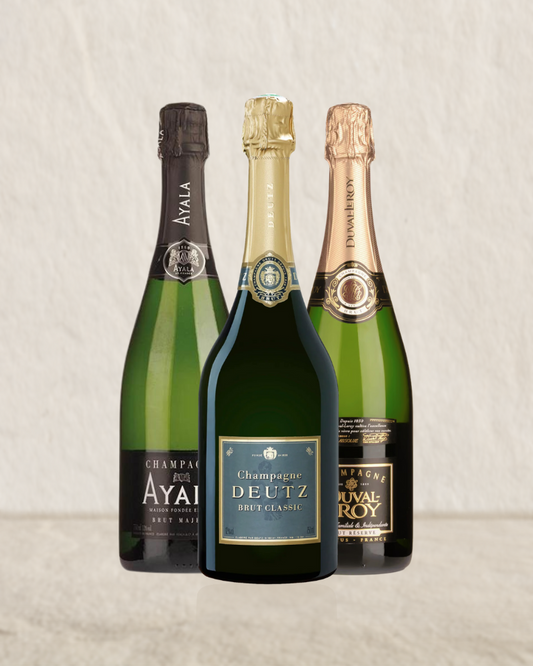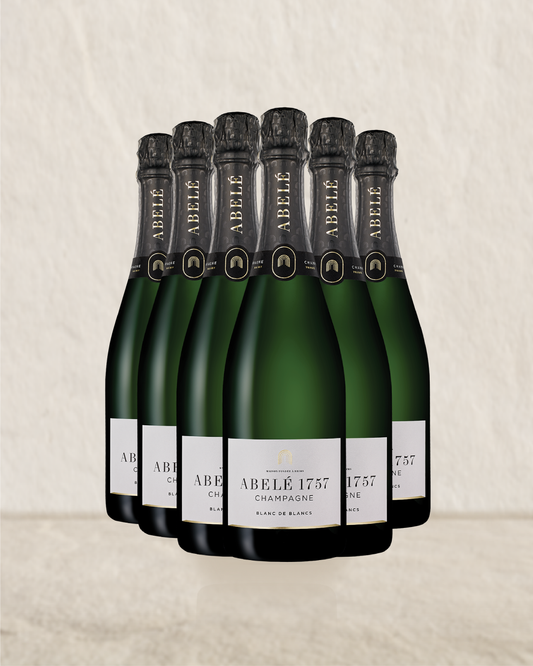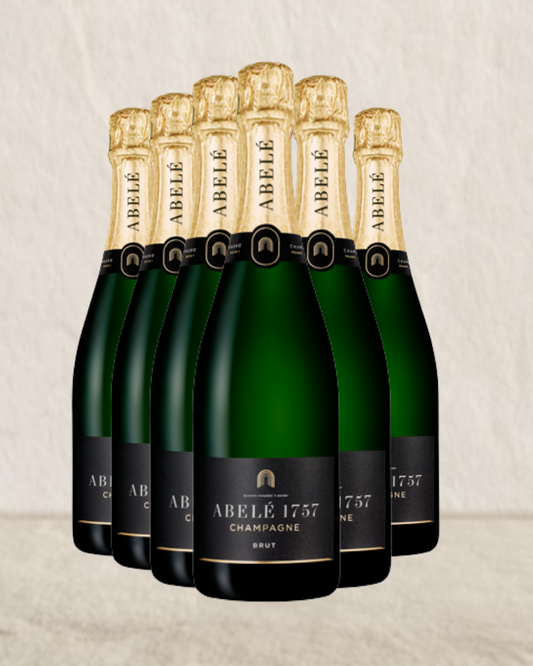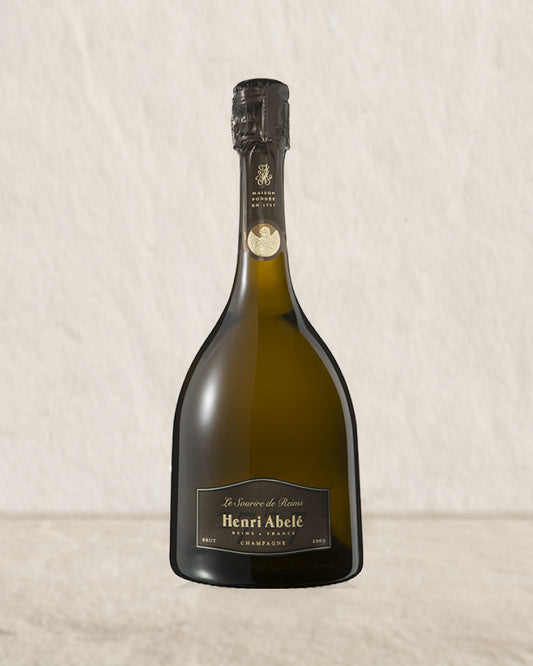Chardonnay, Pinot Noir and Pinot Meunier have proven to adapt the best to variations in the climate and soil of the region. Chardonnay can be grown almost anywhere and there are numerous places where the two Pinots can be successfully cultivated but it is in Champagne where they reach their pinnacle in the production of quality sparkling wines. The marginal climate leads to a very drawn out season where the grapes often struggle to ripen. The grapes however, do achieve physiological ripeness at sugar levels lower than elsewhere whilst retaining all important acidity levels.
The three varieties share certain characteristics such as early ripening, speed of maturation, musts that are high in sugar content, with lifted bouquets of great finesse. Each variety also contributes its own unique addition to the group as a whole.
Chardonnay gives life, acid, freshness, and ageing potential to the blend.
Pinot Noir adds depth, complexity, backbone, strength, and fullness (what the French call “carpentry”).
Pinot Meunier is desired for its hardiness and its forward development making it very useful for non-vintage blends
Pinot Noir -is the dominant variety of the Montagne de Reims and the Cote des Bar and represents 37% of all the varieties. Their clusters are small, long and very compact. They have a thick skin, rich in colouring substances, contain very few pips and a large amount of juice. It is the earliest ripening of the three varieties and is perfectly suited to vineyards facing south or southwest. It prefers a dry, light, chalky soil and a coolish climate, which explains its success in both Burgundy and Champagne. It is vulnerable to cryptogamic diseases including mildew, oidium, and in particular gray rot. It is the most common of all grapes grown in the grand and premier crus and it produces abundant, relatively colourless juice. High in sugar content, it gives wine structure, and endows the wine with complex aromas of red fruits. It does not have the same elegance as Chardonnay but provides more weight and better depth. Pinot Noir is one of the oldest vines and because of this is genetically unstable and mutates easily. There are several hundred different Pinot clones in Champagne
Pinot Meunier is often thought of as the lesser variety lacking in finesse but is a vital piece of the blend. Meunier is grown for its hardiness and its ability to adapt to areas prone to risks of spring frosts. It is widespread throughout the Marne Valley, the Aisne, and the Cote des Bar. Like Pinot Pinot Noir it accounts for 37% of vine stock but unlike both Chardonnay and Pinot Noir it is not classified as a grand cru. The clusters are small, cylindrical and compact. They have thick skins covering very juicy but only slightly acid flesh. As it buds late and matures early it is suitable for sites with poor exposure or shallow sites prone to frost. Supple and fruity, Meunier has an intense bouquet that adds to the balance, making it fresh an round, but is quicker to evolve than the other two varieties. In a blend it helps to soften the strength of Pinot Noir and liven up the elegance of Chardonnay. It is particularly suited for wines that are destined for early consumption.
Chardonnay covers 26 % of the vineyard in Champagne, predominately in the Cote des Blancs, where it is the only authorized variety of grape. Historically Chardonnay was considered to be an inferior variety to the black grapes, presumed to only produce mediocre wines. The evolution and fine tuning of winemaking over the centuries has established Chardonnay to the point where it is now essential to the production of the greatest and most sought after cuvees. Chardonnay buds earlier than the two Pinots yet matures later. This may bring potential risks from spring frosts, and is susceptible to gray rot and oidium due to humidity levels which can promote disease. It also requires large amounts of sunshine to reach full maturity some eight days later than Pinot Noir. Naturally vigorous, Chardonnay, left to its devices may expend its energy on excessive foliage instead of ripening the grapes. The Champenois have overcome this problem however, by dense planting- with up to 7,500 plants per hectare, thus curbing growth.
Chardonnay as a variety brings finesse, lightness and elegance to a blend. Typically displaying floral and mineral elements in its youth, it develops into a honeyed, toasty richness as it matures. It is a wine that is slow to evolve and is highly sought after for its ageing ability.
Official authorization is confined to these three stocks cultivated in the 313 communes of the Champagne AOC. Their unique characters all add to the rich variety of flavours to be found in champagne
Minor Varieties
There are small pockets of varieties that were once grown but are no longer allowed to be replanted.
-
Arbanne – An important variety in the Cote des Bar in the nineteenth century, it had a distinct floral bouquet that could dominate a blend even if only small amounts are used. Due to the grapes sensitivity to mildew saw it disappear even more quickly than Petit Meslier.
-
Petit Meslier- one of the more important secondary varieties and mainly cultivated in the Cote des Bar but is in rapid decline. Highly susceptible to viruses and grey rot, it also tends to bud early which is when it is most vulnerable to spring frosts. It has the ability to ripen only in the very warmest of vintages. They tend to produce wines with higher alcohol levels. The wines are acidic yet fruity and reminiscent of Pinot Meunier.
-
Pinot Blanc -was a mutation between Pinot Noir and Pinot Gris. It is often confused with Chardonnay and it is only on close inspection of the foliage that the two varieties can be distinguished. Pinot Blanc has flat leaves, whilst those of Chardonnay are concave. Where Pinot Blanc has managed to enter vineyards in champagne it has generally occurred without the growers knowledge. The grape is inferior to Chardonnay producing neutral wines that have a high alcohol content and age badly. Its extensive cultivation in both Alsace and Germany is due to its potential high yields.
-
Fromentau- is the term for Pinot Gris used in the Languedoc. It apparently has more body and a more pronounced fruity, tropical taste. It is found mainly in the Aubrey region of Champagne.
- Gamay- Banned by law in 1927, the application was delayed in order to allow growers to replant with noble varieties. In 1952 the use of the grape was finally forbidden. It can still be cultivated but only if the vines were planted prior to 1948, and the vine grower was more than 60 years old in 1952! This humble variety from Beaujolais is now surely taking its final bow.







